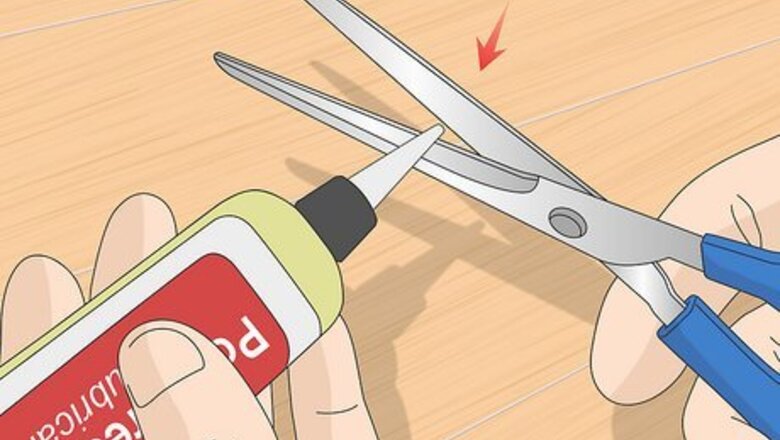
views
Lubricating the Lock Using Powdered Graphite
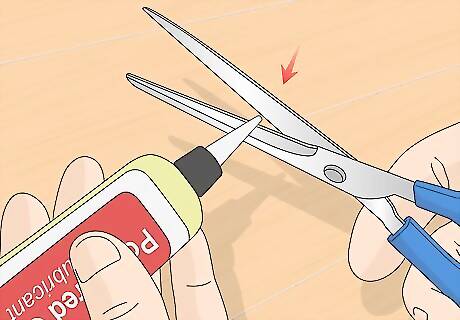
Cut the plastic tip off the end of a tube of powdered graphite. If your lock is so sticky that you can barely get your key in and out, you may need something as tough as powdered graphite, which comes in a tube. Snip the plastic off the end of the nozzle with a sharp pair of scissors so the graphite can flow freely. Powdered graphite is a dry lubricant that encourages smooth movement between two metal surfaces without attracting grime. The graphite particles form a fine layer on the surface of the metal, lubricating and "brushing" away dust and dirt. In a pinch, you can rub a graphite pencil against the surface of the lock.
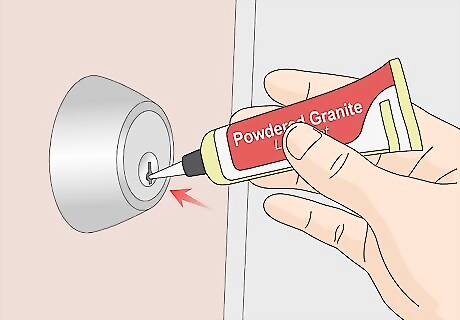
Place the end of the nozzle up to the opening of the lock. Depending on the bottle size, you can fit the nozzle part of the way inside the opening. If not, hold it flush to the lock. It should still be able to penetrate deep enough to lubricate the locking mechanism. Hold the tube level so that graphite doesn't escape around the opening.
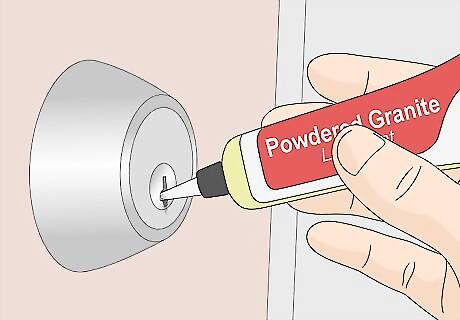
Squeeze the bottle or tube gently to release a few puffs of graphite. Try not to use an excessive amount—graphite is a potent substance, so a little goes a long way. Wait 1-2 minutes so the graphite can start working its magic on the lock. If possible, wear a pair of disposable gloves to avoid getting graphite all over your hands.
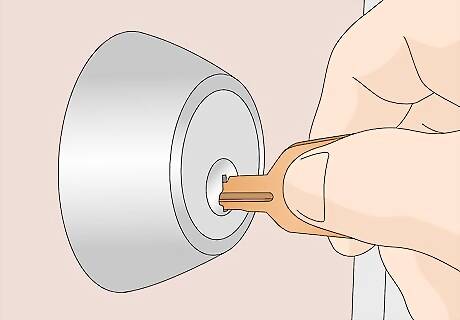
Test the lock by inserting and removing your key once or twice. It should be easy to get the key in and out of the lock now. Turn the key in both directions to see how fluidly it moves. Sliding your key in and out of the lock also helps spread the graphite inside the lock.

Repeat the application as needed. If the lock still feels sticky, hit it again with a few more blasts of powdered graphite. Test the lock after each application. Once the graphite has spread, it will clear away the gunk hindering the lock's movement, leaving you with a fully functioning, hassle-free door. Try squeezing a little graphite onto the door's latch for especially stubborn locks. This is the part of the locking mechanism that moves in and out of the door frame when you turn the knob. Lubricating the latch can help ease the keying action. If you still need help, call a professional locksmith to look at your locks. Sometimes, the problem is with the pins inside the lock slipping down and loosening, which can't be fixed with lubricant.
Spraying the Lock with WD-40 Dry Lube

Attach the applicator straw to the nozzle of a can of WD-40 Dry Lube. Expert Home Specialist Ryaan Tuttle suggests using the thin, flexible red applicator straw that fits right over the nozzle where the oil comes out. The straw will allow you to penetrate deep into the lock, lubricating it more effectively. While WD-40 is a common household item that can be used on nearly everything, it's not recommended for long-term use. It's effective for a quick fix, but dust and debris can still stick to the surface. WD-40 Dry Lube PTFE Spray is dust and dirt-resistant and has long-lasting corrosion protection. Avoid using any lubricants that aren't appropriate for home improvement uses, such as cooking, botanical, or sewing machine oil. Most oils will attract dust that forms new layers on the locking mechanism, worsening the problem.
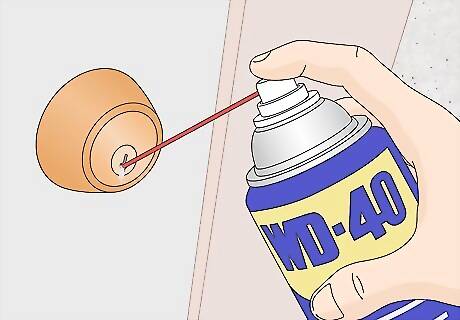
Insert the straw into the lock opening and spray in short bursts. Guide the straw as far as possible to ensure you're hitting every part of the locking mechanism that may be sticking with the WD-40 Dry Lube. Tuttle says to press the button on the rear of the canister to release the lubricant. Don't be afraid to use a liberal amount if you need to. Keep spraying until oil overflows from the lock. Wear gloves while handling lubricants to prevent a slippery mess.
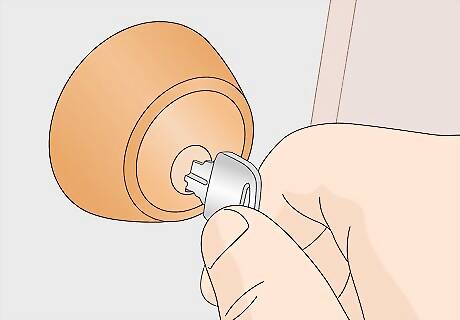
Wait 1-2 minutes and test the lock with your key. Give the lubricant a little time to break down the dust and dirt accumulated inside the lock. Then, slide your key in and out of the lock a few times to see how smoothly it moves. If the lock still sticks, you may need to try a more heavy-duty lubricant like powdered graphite.
Using Teflon Lubricants on Sticky Locks
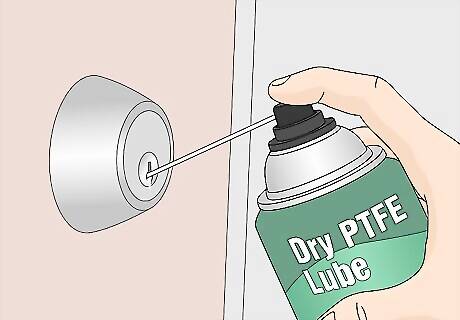
Spray a small amount of lubricant into the keyhole. Telfon-based lubricants are made with polytetrafluoroethylene or PTFE, which is well known for its non-stick properties. If that sounds familiar, that's probably because it is! It's commonly used on frying pans. Spray a small amount into the keyhole and test the key. Teflon comes in an aerosol can or as a powder with a brush applicator.
Preventing Sticky Locks
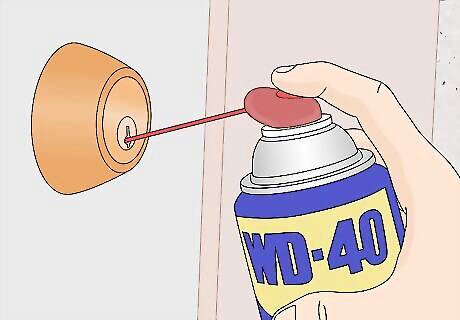
Regularly clean your locks with multi-use WD-40. If you're stuck in a pinch and have nothing but oil or regular WD-40, that's okay! These are still effective methods for a quick sticky lock fix. Afterward, apply a generous amount of multi-use WD-40 to dry the lock and remove lingering lubricants. Regular use can limit the amount of dust and dirt accumulating over time, making sticky locks less likely.
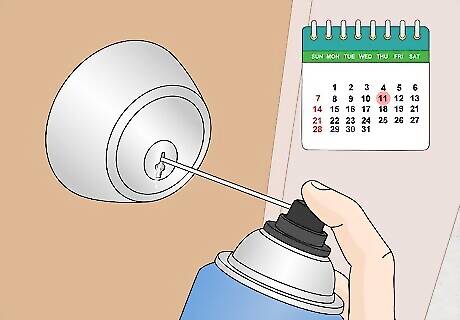
Lubricate locks at least once every three months. How often you should lubricate your locks depends on the product you're using. However, to prevent your locks from sticking, touch them up once every season, especially for Telfon-based lubricants. However, if you're using WD-40, you may have to go in once a month since it dries out quickly. With stronger lubricants, like graphite, you may only need to lubricate your locks once a year.
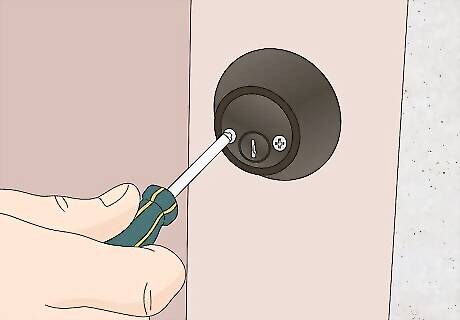
Update your locks when necessary. If your lock is constantly getting stuck or sticky, it may be time to get a replacement before you break a key. You can get the same model or an updated keypad, so you no longer have to deal with keys; the choice is yours. Contact your local locksmith for advice and further assistance, or take matters into your own hands and DIY your new lockset!




















Comments
0 comment